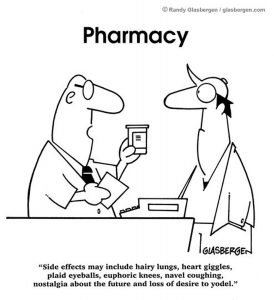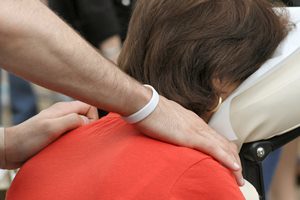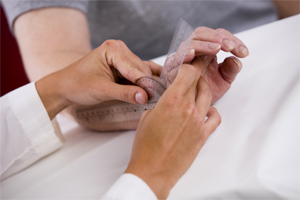Dutch Apple Cake Recipe – No Refined Sugar!

As we mentioned in Wednesday’s post, we are going to be sharing
recipes that taste great but don’t have refined sugar. Here’s a link
to a great recipe! Lots of yumminess and no refined sugar!:

As we mentioned in Wednesday’s post, we are going to be sharing
recipes that taste great but don’t have refined sugar. Here’s a link
to a great recipe! Lots of yumminess and no refined sugar!:
 We recently posted about standing desks. For those of you who are looking for some good information on standing desks, today we are sharing a review on some standing desks. Standing desks are a great option where they are allowed! Standing desks can be of great benefit by allowing greater circulation while you are working at your desk! Wonderful for those of us who spend a considerable amount of time sitting at a desk!
We recently posted about standing desks. For those of you who are looking for some good information on standing desks, today we are sharing a review on some standing desks. Standing desks are a great option where they are allowed! Standing desks can be of great benefit by allowing greater circulation while you are working at your desk! Wonderful for those of us who spend a considerable amount of time sitting at a desk!
Here’s the link to the review: http://www.reviews.com/standing-desk/

We know that many people feel that it is easier to take a pill than to take care of themselves. It may seem easier in the short term but in the long run, it is never the solution for maximizing your health and longevity. It is now estimated that 95% of all cancers are life-style related. Other health such as heart disease. diabetes, and arthritis are most often related to a person’s lifestyle as well. If you want to be healthy and to age gracefully, the best way is to start improving your lifestyle choices today! If you have any questions on how you might do that, be sure to contact our office!
Today, we are sharing a great article from the Sparman Clinic Blog!:
Many side-effects associated with prescription medication can be more detrimental than the condition they are treating. The best way to avoid having to take prescription medication is to take care of yourself through diet, exercise, and natural preventative supplements.
Why the Push For Prescription Medication?:
The pharmaceutical industry is a booming business. Americans spend over $200 billion per year on prescription medication. While many of these medications have helped people recover and live healthy lives, there is a potentially dangerous situation that can result from over-medication (taking an excessive amount of prescription drugs) or using drugs that come with a high-risk of hazardous side-effects. These side-effects can be overlooked when it is seen as a solution to a painful or life-threatening health condition.
What are Some Potential Side-Effects?:
Depending on the type of medication you are choosing, many may only mask or slow the symptoms of a condition, rather than heal. In the process, some negative side-effects can emerge, causing discomfort or health risks. Depending on other medications or a person’s physical make-up, there can be different reactions with different people.
How Can You Reduce Your Risks?:
The best way to reduce your risk of negative side-effects with prescription medication is not taking any! While there are some conditions where this is not an option, many health conditions and diseases can be prevented through diet, exercise, and the use of natural supplements. Preventative care is essential to a long and healthy life free from reliance on prescription medication. Make sure your diet is full of raw, organic fruits and vegetables that provide the essential vitamins and minerals needed for healthy body functions. Exercise should be a regular part of your routine; this keeps your heart pumping.
Why Choose Natural Supplements?”:
If you are looking for additional ways to keep your heart healthy as you age, a good choice can be a natural supplement. These supplements may supply vitamins, minerals, and antioxidants to help you meet your nutrient needs. Using a natural supplement in conjunction with a healthy lifestyle can greatly reduce your risk of heart disease and improve your quality of life.
Overall, your health is in your hands. There is a lot of controversy in the pharmaceutical industry and what works for someone else, may not work for you. Reduce your risk of dependence on medication which could come with some serious side-effects by taking care of your health through diet, exercise, and natural vitamin supplements for a well-rounded lifestyle.
 Manual therapies have been used to treat musculoskeletal disorders for thousands of years. Practitioners around the world—in countries with many different cultural influences and diverse medical traditions—have used their hands to manipulate various parts of the body to stimulate healing. “Manual” literally means “by hand.” Thus, manual therapies consist of healing techniques that use the hands. There are more than two dozen techniques used worldwide. Among the most commonly known are acupressure, chiropractic, massage therapy, physiotherapy, reflexology, Rolfing and shiatsu.
Manual therapies have been used to treat musculoskeletal disorders for thousands of years. Practitioners around the world—in countries with many different cultural influences and diverse medical traditions—have used their hands to manipulate various parts of the body to stimulate healing. “Manual” literally means “by hand.” Thus, manual therapies consist of healing techniques that use the hands. There are more than two dozen techniques used worldwide. Among the most commonly known are acupressure, chiropractic, massage therapy, physiotherapy, reflexology, Rolfing and shiatsu.
There are also dozens of other, lesser-known manual therapies, including the Bowen technique, cranio-sacral therapy, the Dorn method, manual lymphatic drainage, muscle energy technique, myofascial release, myotherapy, naprapathy and zero balancing. We examine the most common therapies here:
Acupressure
Using the hand, the elbow or various devices, an acupressure practitioner applies a light force on various parts of the body following the patterns found in traditional Chinese medicine and acupuncture. More than half of the scientific studies on acupressure showed that this technique was effective, but some critics have claimed “a significant likelihood of bias.”
Chiropractic
Most chiropractic work involves manipulation of the spine to achieve better vertebral alignment. Lower back pain is perhaps the primary complaint which leads patients to a chiropractor. Chiropractors are expert at treating musculoskeletal conditions without the use of drugs or surgery. Among others, many top athletes swear by their chiropractor’s hands to keep them performing at their best and help them avoid injuries.
Massage Therapy
This is perhaps the oldest of the manual therapies. Massage was (and still is) used in ancient Egypt, China, Mesopotamia, and other parts of the world that gave rise to early civilizations. Massage practitioners chiefly use their hands, but also other parts of their body to apply pressure, rolling motions and other techniques to muscles and joints, to stimulate circulation and relax the patient. In today’s high-stress world, massage is proving ever more popular.
Physiotherapy
Physiotherapy has been used for years as standard treatment for patients suffering from musculoskeletal conditions. A physical therapist uses a variety of techniques to help their patients regain function—particularly mobility. Repetitive, assisted motion can help the patient strengthen muscles that have been damaged through injury or disease. Assisting the patient in the performance of targeted exercises can help a patient regain greater range of motion.
Reflexology
A trained reflexologist applies pressure to various parts of the feet, hands or ears to stimulate organs within the body associated with the part to which pressure is being applied. It is a Chinese therapy with a philosophy that is similar to acupuncture—using points on the body to restore energy flow. Although there is not yet much scientific evidence to support its effectiveness, anecdotal evidence shows that patients are happier and more relaxed after treatment.
Rolfing Structural Integration
Rolfing specifically targets the body’s connective tissue to release tension, realign and balance the body. Rolfing techniques involve deep-tissue massage to achieve therapeutic benefits such as better posture and greater freedom of movement, including reducing stress and relieving pain.
Shiatsu
A traditional Japanese therapy, the term Shiatsu means “finger pressure,” but can include palm pressure and other approaches to massage. A Shiatsu practitioner uses touch, comfortable pressure and manipulative techniques on specific points of the body (similar to the meridians of Traditional Chinese Medicine) to adjust the body’s physical structure and balance its energy flow. Anecdotal evidence shows it to relieve patients of stress, nausea, muscle pain, depression and anxiety.

A “pinched nerve” refers to a condition in which a nerve is compressed by surrounding tissue, such as ligament, cartilage, tendon or bone. The term “pinched nerve” is not a standard medical expression, but it’s an intuitive expression that almost anyone will understand.
Nerves radiate from your brain, down your spine and to all other parts of the body. Signals are sent from and to the brain along the nerves, and if a nerve is compressed (“pinched”), it will interfere with proper signal transmission. Usually, this will manifest as pain, not only at the site of compression, but sometimes radiating from that point to surrounding parts of the body. Misalignment of the spine can result in pinched nerves that can give you back pain and even a deadening ache or sensitivity along your arms (cervical radiculopathy) or legs (sciatica).
Any pain of this sort is a warning signal that there is a problem that should be treated right away. Left untreated, pinched nerves can lead to a loss of the protective barrier around the nerves which could generate fluid buildup. And this fluid would create swelling, more pressure, more pain, and possibly scarring. When nerves have been scarred, they may no longer function properly.
Pain isn’t the only indication of a pinched nerve. Sometimes a compressed nerve will generate numbness or tingling, a burning or “pins and needles” sensation, or even weakness during certain activities.
Pinched nerves can occur more often when the following risk factors are involved:
Mainstream medicine frequently recommends drugs, including NSAIDs, oral corticosteroids, narcotics (for emergency, short-term pain relief) and steroid injections to treat the symptoms of a pinched nerve. The Mayo Clinic suggests that patients can sometimes recover within a few days or weeks from pinched nerves with rest and additional “conservative treatments.” Other mainstream medical treatments may include physical therapy, a splint to immobilize a limb to give it a bit of rest, or surgery.
A chiropractor specializes in nerve health and non-invasive methods of reducing pain and restoring proper function, including spinal adjustments and other treatments that take the pressure off the nerves without the need for drugs or surgery. Sometimes a single adjustment can lead to immediate relief. In other cases, repeat visits may be required for full recovery. If you or someone you care about is suffering from a pinched nerve, you should know that there are alternatives to drugs and surgery and that chiropractic care has proven effective in treating the source of the problem so it is less likely to recur in the future.
If you would like to be seen by Dr. Oblander for treatment of a pinched nerve or any other ailment, please call our office at 406-652-3553 to schedule an appointment.
 What do you think about when you hear the word “massage”? If you’re like many people, you associate massage with a day of pampering at an exclusive resort spa in the mountains or at the beach. But if that’s the first picture that comes to mind, you might be missing something very, very important. That something is the therapeutic value of massage—the ways that massage can actually improve your health and well-being.
What do you think about when you hear the word “massage”? If you’re like many people, you associate massage with a day of pampering at an exclusive resort spa in the mountains or at the beach. But if that’s the first picture that comes to mind, you might be missing something very, very important. That something is the therapeutic value of massage—the ways that massage can actually improve your health and well-being.
While it is certainly true that many types of massage do help with relaxation, therapeutic massage also has a variety of important health benefits. For instance, therapeutic massage:
Practitioners and patients alike have discussed these types of benefits for many years, but researchers have recently made a great deal of progress collecting and analyzing clinical data to understand the effects of therapeutic massage. Here are some “headlines” from their work as well as a few “notable quotes” from their study findings.
Improved Circulation and Post-Exercise Pain Relief
Investigators at the University of Illinois at Chicago recently conducted a study to determine whether or not massage improves general circulation and relieves soreness after exercise.
Reduced Chronic Low Back Pain and Improved Mobility
There are more than 100 million massage therapy visits in the U.S. each year, and lower back pain accounts for more than one-third of them. Why? Because massage works!
A study in the Annals of Internal Medicine found that patients receiving massage (whether “structural” massage or “relaxation” massage) had better outcomes than those receiving typical medical care without massage. Measured after 10 weeks and again after 26 weeks, patients who received massage had less pain and better mobility than the control group. At 52 weeks, the results were less clear.
A review in Harvard Health Publications contained some very positive words about the study, which was funded by the National Institutes of Health’s National Center for Complementary and Alternative Medicine:
The Chiropractic Care – Massage Therapy Connection
Massage is often recommended as an integral part of a broader chiropractic treatment plan, either in the form of massage to loosen muscle tightness before an adjustment, or after an adjustment to help the muscles adapt to the newly-repaired spinal structures. Many patients report that the combination of these two therapies works better than either therapy alone. In our experience, this is most noticeable with conditions that cause chronic pain—chiropractic manipulation or mobilization techniques work to relieve the structural problems and therapeutic massage works to resolve the soft tissue problems. This is why many chiropractors work closely with massage therapists to find the most effective treatment regimen for each patient—the one that returns them to a feeling of health and well-being as quickly as possible. In our Grand Avenue office, here in Billings, Dr. Oblander often works hand in hand with our massage therapists to work with patients who have been in car accidents, are worker’s compensation patients, or who have other issues which our experience tells us would be addressed by combining massage therapy with chiropractic care
If you’re interested in learning more about what massage and chiropractic care can do for you, please give Oblander Chiropractic a call at 406-652-3553! We’ll be happy to discuss your situation with you and to explain our approach. We’re here to help!
 Do you want to become healthier and stay healthy longer? Take a walk. That is the message of two important new studies.
Do you want to become healthier and stay healthy longer? Take a walk. That is the message of two important new studies.
In the first, from Tel Aviv University in Israel, researchers found that a simple aerobic program based on walking was as effective in alleviating lower back pain as muscle-strengthening programs that required specialized rehabilitation equipment. The researchers recruited 52 patients with chronic lower back pain, and assigned half of them to complete a six-week, clinic-based muscle-strengthening program, exercising under supervision two to three times a week. The other half of the patients spent the six weeks of the study walking for 20-40 minutes two to three times a week.
According to study leader Dr. Michal Katz-Leurer, in research published in the journal Circulation, the walking program was “as effective as treatment that could have been received in the clinic.” He explained that when people walk, their abdominal and back muscles are forced to work in a similar way as when they complete rehabilitation exercises targeting those areas. And unlike rehabilitation, which requires specialized equipment and expert supervision, walking is an activity that can be performed alone, and easily fit into a person’s schedule.
In the second study, researchers from Brigham and Women’s Hospital in Boston analyzed data collected on the activity and sitting habits of 36,000 older men, over a period of 24 years. The researchers determined how much time the men spent sitting, performing other activities, and walking, and whether they walked at an easy, average, or brisk pace. What they found was that even a little walking each week significantly lowered the risk of hip fractures in men over 50.
Over the period of the study, which was published in in the American Journal of Public Health, 546 hip fractures occurred, 85% of which were from “low trauma” events such as slipping, tripping, or falling from a chair. The study data indicates that the more the men walked, and the more vigorously they walked, the lower their risk of hip fracture was as they aged. Walking over four hours per week was identified as the point at which the most significant benefits occurred, providing a 43% lower hip fracture risk than in men who walked only one hour a week.
Study author Diane Feskanich says about her findings, “It’s well known that physical activity helps to prevent hip fractures, that it helps to build bone and muscle tone. It can help with balance, too. One thing we’re pointing out here is that it doesn’t necessarily have to be strenuous activity. A lot of studies have focused on the benefits of strenuous activity, but we found walking alone helped to prevent hip fractures, and when you come down to it, older people are often more comfortable with walking.”
 Researchers have found in study after study that meditation can offer both mental and physical health benefits. Doctors and integrative health programs increasingly prescribe meditation techniques alongside traditional treatments to achieve a wide range of health goals, from increasing immunity to lowering high blood pressure and reducing the symptoms of irritable bowel syndrome. On the surface of things, meditation would seem to offer a variety of benefits-if it actually works. After all, it’s non-invasive, drug-free, and costs nothing. So how effective is it?
Researchers have found in study after study that meditation can offer both mental and physical health benefits. Doctors and integrative health programs increasingly prescribe meditation techniques alongside traditional treatments to achieve a wide range of health goals, from increasing immunity to lowering high blood pressure and reducing the symptoms of irritable bowel syndrome. On the surface of things, meditation would seem to offer a variety of benefits-if it actually works. After all, it’s non-invasive, drug-free, and costs nothing. So how effective is it?
Approximately 500 clinical trials have been performed on the health effects of meditation, of which about 40 have been long-term studies. Short-term studies have found that meditation may reduce the risk of Alzheimer’s, and that it improves memory and general cognitive functioning.
Of the long-term studies, a nine-year study of African-Americans with heart disease found that those who regularly practiced Transcendental Meditation (TM) twice a day had a 48% lower risk of stroke, heart attack or death than those who had only receive health education. They reported significantly less stress and had 5mmHg lower systolic blood pressure.
Two studies from Ohio State University found that meditation was effective against cancer. The first showed that breast cancer survivors had a lower recurrence of the disease with the daily practice of relaxation meditation. The second found that meditation increased the elderly subjects’ “killer cells,” providing more resistance to viruses and tumors.
Meditation has also been found to cause epigenetic changes by helping to maintain telomere length. Telomeres are the protective sheaths at the ends of our chromosomes, which become shorter as we age, increasing the risk of dementia, heart disease and cancer. A study published in the International Journal of Geriatric Psychiatry showed a 43% greater increase in activity of the enzyme that regulates telomere length in those who meditated as opposed to those who just listened to relaxing music.
Those suffering from irritable bowel syndrome will be glad to learn that meditating twice daily can significantly reduce symptoms of constipation, bloating and diarrhea. It has also been shown to reduce depression and impart a general sense of calm.
Scientists believe that one of the major benefits of meditation is that it lowers stress. Stress causes the release of hormones such as cortisol, which stimulates the “fight or flight” response, increasing blood pressure and stress on the arterial walls. Although one of the roles of cortisol is to control inflammation in the body, with prolonged exposure to it (which is what happens with chronic stress), the body eventually becomes unresponsive to the hormone. Despite the adrenals pumping out more cortisol to try to keep up, inflammation continues to increase. By lowering stress, inflammation is reduced throughout the body, resulting in a reduction in the symptoms of chronic disease.
The practice of meditation is a simple one that anyone can perform once or twice a day for 10-15 minutes sessions. Sit comfortably cross-legged on the floor or in a chair with your feet flat on the floor and your spine straight. With eyes open or closed, simply bring your attention to your breath and notice it as it comes in and goes out. When your mind begins to wander (which it always will), just bring your attention back to the breath. Some find it useful to focus on each part of the body, mentally relaxing each muscle as you focus on it.
While there’s growing awareness among the general public that meditation can significantly improve people’s quality of life, there’s also plenty of evidence that meditation can offer specific physical and mental health benefits. If you’re interested in learning more, we encourage you to call or visit our office!
Carpal Tunn el Syndrome (CTS), named from the carpal bones in the wrist that form a tunnel around the nerve leading to the hand, is an injury usually caused by repetitive and forceful movements that result in swelling around the tendons and pinching of the median nerve, causing painful tingling, lack of muscle strength and control in the hand, and pain shooting from the hand up to the shoulder. CTS is a risk to most workers, such as those who work on the computer and also store and assembly line workers, who receive micro-traumas to their hands and wrists on a daily basis due to awkward positioning, forceful and repetitive movements, and stressful activity.
el Syndrome (CTS), named from the carpal bones in the wrist that form a tunnel around the nerve leading to the hand, is an injury usually caused by repetitive and forceful movements that result in swelling around the tendons and pinching of the median nerve, causing painful tingling, lack of muscle strength and control in the hand, and pain shooting from the hand up to the shoulder. CTS is a risk to most workers, such as those who work on the computer and also store and assembly line workers, who receive micro-traumas to their hands and wrists on a daily basis due to awkward positioning, forceful and repetitive movements, and stressful activity.
The usual treatment for Carpal Tunnel Syndrome can extend to heavy medication and surgery, however there are alternative methods of treatment that can alleviate the symptoms and effects arising from CTS. Chiropractic treatment for CTS has been studied against conventional non-surgical medical treatment and was found to be effective. This offers an alternative to sufferers who are intolerant to ibuprofen, or those who simply wish to avoid treating with medication.
The median nerve in the wrist, which when trapped causes Carpal Tunnel Syndrome, connects to the spinal cord through the openings in the bones in the areas around the lower neck. If these bones in the spinal cord lose their ordinary position or motion, this can cause problems in the wrists or fingers. Through chiropractic treatment, these bones can be reset to the correct position and can help to treat CTS.
If Carpal Tunnel Syndrome is detected early, then surgery can be avoided, and chiropractic treatment is the leading method of non-surgical treatment. Chiropractic treatment usually involves various methods, with a combination of rest, ice, ultrasound, and electrical stimulation, including:
* By chiropractic manipulation therapy of the elbow and upper spine, where the joint’s soft tissue undergoes manipulation;
* Nutritional supplements in the diet such as B6, a vitamin that has had long-term promotion in its treatment of CTS;
* Electro-acupuncture treatment; bracing, a technique that has had extensive success, by limiting extension and flexion in the hand, and with compression on the median nerve may encourage recovery and ease the swelling in the tendons;
* Exercises for the wrist and hand designed to encourage recovery;
* Reassessing the ergonomics of the work place to minimize stress the best way as possible.
Recent studies concluded that using manual therapy intervention such as soft tissue mobilization (STM) has been found to help improve the signs and symptoms of CTS, with improvements to nerve conduction latencies, wrist strength and motion.
Carpal Tunnel Syndrome can become a serious health problem, and if left too long may require surgery. If it’s caught early, then chiropractic treatment is an effective, drug-free method to ease the symptoms and pains caused by CTS, and provide long-term relief from CTS.
Every body is different. If you have questions about this article or whether chiropractic is an appropriate choice for your specific situation, please ask. We are here to help!
 When it comes to making important choices about treatment options for back pain, it’s worth looking at the experiences of others who have found something that works. In recent years, the Consumer Reports Health Ratings Center has surveyed the magazine’s subscribers to do just that. In April and May 2009, Consumer Reports released some of its findings publicly. A summary appears below.
When it comes to making important choices about treatment options for back pain, it’s worth looking at the experiences of others who have found something that works. In recent years, the Consumer Reports Health Ratings Center has surveyed the magazine’s subscribers to do just that. In April and May 2009, Consumer Reports released some of its findings publicly. A summary appears below.
About the Survey Participants:
* More than 14,000 participants who had suffered from lower-back pain in the prior year but had never had back surgery.
* More than half reported that pain severely limited their daily routine for a week or longer.
* Many reported that pain interfered with sleep, sex and efforts to maintain a healthy weight.
* 88% reported that the pain recurred through the year.
* Most had tried five or six different treatments.
How Respondents Ranked the Healthcare Providers Who Had Treated Them:
| Healthcare Provider | Percent Who Were Highly Satisfied With Treatment and Advice* |
| Chiropractor | 59% |
| Physical Therapist+ | 55% |
| Acupuncturist | 53% |
| Physician, Specialist | 44% |
| Physician, Primary Care | 34% |
How Respondents Ranked Selected Back Pain Therapies:
| Therapy | Percentage Who Reported that the Therapy Helped a Lot |
| Chiropractic Manipulation | 58% |
| Prescription Drugs | 45% |
| Over-the-Counter Drugs | 22% |
In July 2011, Consumer Reports published an updated report describing how Americans use alternative approaches to healthcare as well as their experience with various therapies and their providers. Chiropractic care once again was reported to be the most popular approach to back pain relief and was ranked most highly in terms of patient satisfaction.
Your Doctor of Chiropractic can help relieve back pain and restore mobility by using a drug-free, hands-on technique called “spinal manipulation” or “chiropractic adjustment”. He or she may also use other manual therapies, such as massage, to complement this primary treatment. In addition, many chiropractors are skilled in designing exercise and nutrition programs for their patients that will help their bodies resist injury and function properly. By focusing on both immediate pain relief and the underlying causes of back pain, your chiropractor can help you achieve a healthier overall lifestyle.
Every body is different. If you have questions about this article or whether chiropractic is an appropriate choice for your specific situation, please ask. We are here to help!